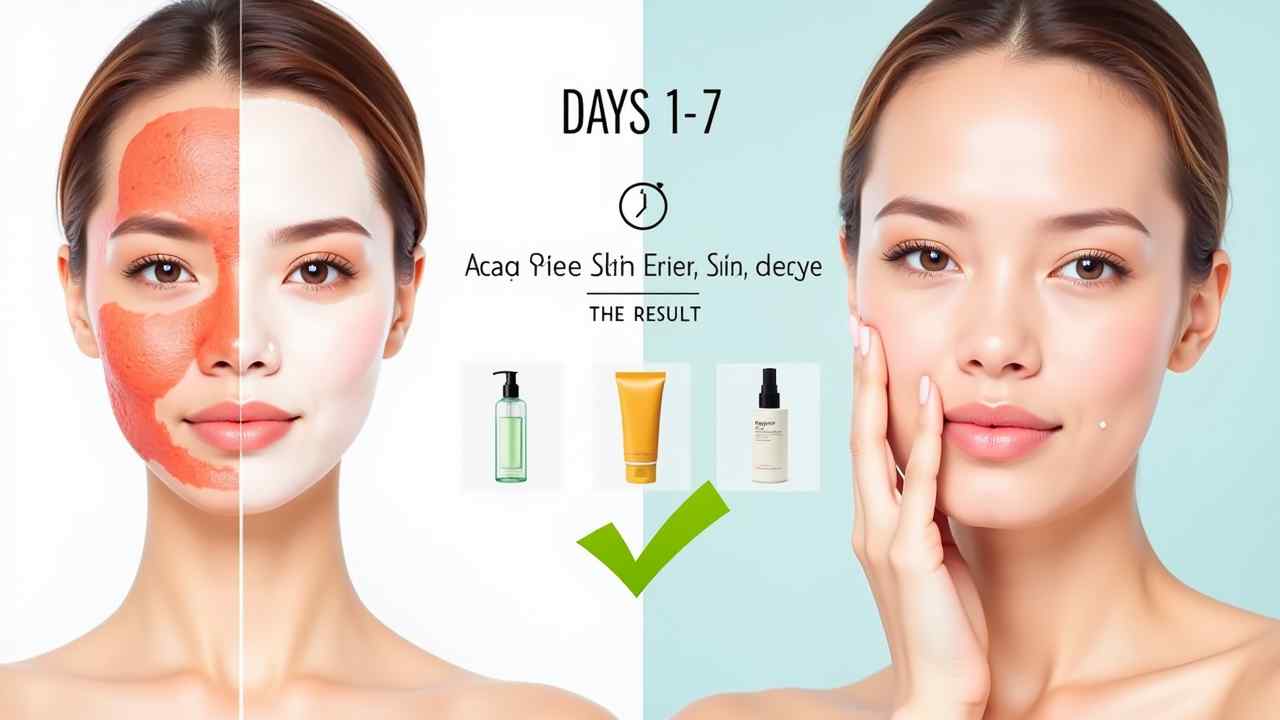
Peel? A Dermatologist's Guide
Peel? (A Dermatologist's Guide to the Healing Process) Peel, it is an exciting step towards smoother, brighter skin. You have been promised a radiant glow. So it can be incredibly alarming when, a few days later, your skin looks red, flaky, and is breaking out. This leads to a panicked question: why does my skin look worse after a chemical peel?
First, take a deep breath. In most cases, this is a completely normal and expected part of the healing process. A chemical peel is a controlled injury to the skin. It must go through a healing phase before you see the beautiful results. It is a classic case of "it has to get worse before it gets better."
This guide will explain what is happening to your skin. We will cover the normal side effects versus the signs of a real problem. Let's get you through this crucial recovery phase. ✅
Important Medical Note: A chemical peel is a professional procedure. If you have severe pain, blistering, or signs of infection, you must contact your dermatologist or the practitioner who performed the peel immediately.
🤔 Why is Your Skin Peeling and Red?
The primary job of a chemical peel is to exfoliate the top layers of your skin. The acid solution dissolves the bonds that hold the dead, dull, and damaged skin cells together. This peeling and flaking is the entire point of the treatment! It is the old skin making way for the new.
The redness and sensitivity are signs of inflammation. This is your body's natural healing response. The extent of the peeling and redness will depend on the depth of your peel. A light peel might cause mild flaking. A medium-depth peel can result in more significant shedding.
- What is "Purging" and Why Am I Breaking Out?
This is a very common reason why your skin looks worse after a chemical peel. The peel dramatically speeds up your skin's cell turnover rate. This process can push all the underlying clogs (microcomedones) that were already brewing under the surface to the top all at once. This results in a temporary breakout of small pimples.
This is known as skin purging. While frustrating, it is actually a good sign. It means the peel is effectively cleaning out your pores. These breakouts will be short-lived. They will heal much faster than normal pimples.
- How to Differentiate Healing from a Bad Reaction?
Normal healing includes redness, dryness, tightness, and peeling. Purging is also normal. However, you should call your doctor if you experience:
- Extreme swelling or blistering.
- Yellow crusting or pus, which are signs of infection.
- Pain that is severe or getting worse instead of better.
🩹 What is the Correct Aftercare Routine?
The aftercare for a chemical peel is all about being gentle. Your skin barrier is compromised and needs to be babied. A simple, soothing routine is non-negotiable.
1. Use a Gentle, Soap-Free Cleanser: Wash your face with only your fingertips and lukewarm water. Do not use any scrubs, brushes, or washcloths.
2. Hydrate, Hydrate, Hydrate: Your skin is thirsty. Use a simple, bland hydrating serum containing hyaluronic acid. Follow this with a thick, barrier-repair moisturizer that contains ceramides.
3. AVOID All Active Ingredients: For at least one week, you must stop all retinoids, other exfoliating acids, and Vitamin C serums.
☀️ What is the Most Important Step of All?
This is the most critical rule. Your new, fresh skin is extremely vulnerable to the sun. You must be absolutely diligent about sun protection. Unprotected sun exposure can lead to severe damage and hyperpigmentation.
You must wear a broad-spectrum, mineral-based sunscreen with at least SPF 30 every single day. The gentler autumn sun here in Bursa is still powerful. Sun protection is the key to protecting your investment and ensuring a beautiful result. 🍂